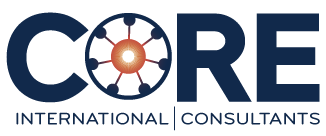Originally posted at the beginning of the pandemic as “There’s More to Work than Work”, I believe two years later these tips still resonate, especially as operations begin to ramp up during the “return to office” that many organizations are undergoing.
COVID-19 has forced companies worldwide to change how they work—a change that many experts suggest could be permanent.
Most people would agree that more than “work” happens at “work”.
We take the time to define “work” when we are engaged with our clients and to differentiate between these two different usages.
In the first instance, “work” is a thinking process that uses resources and methods over time to produce outputs. In the second instance, it’s the place where these activities most often happen. From this point forward I’ll use the “work is a thinking process” definition.
There are two ways to distribute work in any organization: structure (which governs the “top down” distribution of work), and process (which governs the lateral movement of work, through business processes).
In an HBR article a few years back (All Organizations Are Social, But Few Are Social Organizations by Anthony J. Bradley and Mark P. McDonald) a third dimension is defined – the social dimension.
This fits with our view and our experience that organizations are social systems, and any work to be done in terms of organization design and structure, or organizational effectiveness, needs to take this important third dimension into account.
The global pandemic has pushed many organizations to find new ways to work and will likely impose a permanent change on the social systems we call organizations. For managers and leaders worldwide, there are some implications that bear thinking about.
The social dimension of work contributes significantly to two critical features of organizational life: organizational culture and innovation.
Organizational culture (a term first used by Dr. Elliott Jaques) is probably most easily thought of as “how we do things around here”. There are four important elements of a healthy corporate culture: 1) aligning mission and vision; 2) clarifying roles and structure; 3) a robust management system, and; 4) the opportunity for everyone to develop according to their individual skills and interests. Access our form to receive our infographic on corporate culture here.
Many elements of culture are developed through first-hand observation and one-on-one interaction, either with peers or managers. Onboarding programs for instance, are often the leading edge of introducing new players to the corporate culture. Well executed they set out the “ground rules” for success in the organization. Working on a team or directly with their manager also helps to introduce an individual who is new to the organization to its culture.
In the dispersed world we now live in managers are accountable to ensure that the corporate culture doesn’t get lost in the shuffle. The best way to do this is through the use of the managerial leadership tools present in the organization. Simply being aware that the reduction in face-to-face work will likely cause a deterioration in the transmission of culture, should help managers accommodate so that the culture remains robust. You may need to be creative in how you do this… perhaps regular online team meetings, or video-enabled one-on-ones until the “new normal” is established.
The second key feature that may be affected is innovation.
In our experience, innovation happens at many different levels. Not every innovation results in a breakthrough new product (although some do!). Sometimes, innovation takes the form of a tweak to an existing process or system. Sometimes it may be sharing tools and techniques that one individual has developed for their own use, with the rest of the team.
In the physical workplace, these smaller innovations often happen spontaneously between team members, or when an individual is inspired by a conversation or an exchange of ideas. These “water cooler” conversations will be difficult to replicate when teams are dispersed and working at a distance. Innovation may lag as a result.
It may seem artificial at first, but perhaps it’s worthwhile for managers to sponsor an “innovation minute” during virtual get-togethers. Questions like “does anyone have any new ideas to offer to the group?” or “anyone have an interesting or new approach to getting things done?” might provide fertile ground for innovation at the working team level in the short term.
There is no doubt that social distancing and working virtually will have an impact on the social systems we call workplaces.
Human beings are remarkably resilient however, and new practices will certainly emerge to fill these gaps. In the short run, managers will likely have to make up for the reduction in face-to-face, in-person human interactions that occur regularly in the workplace, to ensure that the culture remains strong and innovation continues.
And the great thing about doing this is—you’re innovating! If there is anything I can do to help you think through some of these issues, or if you’d just like to knock some ideas around, you can click here to book some time for a chat. No obligation, no selling—just my way of doing something to help managers manage in this complicated new world.

